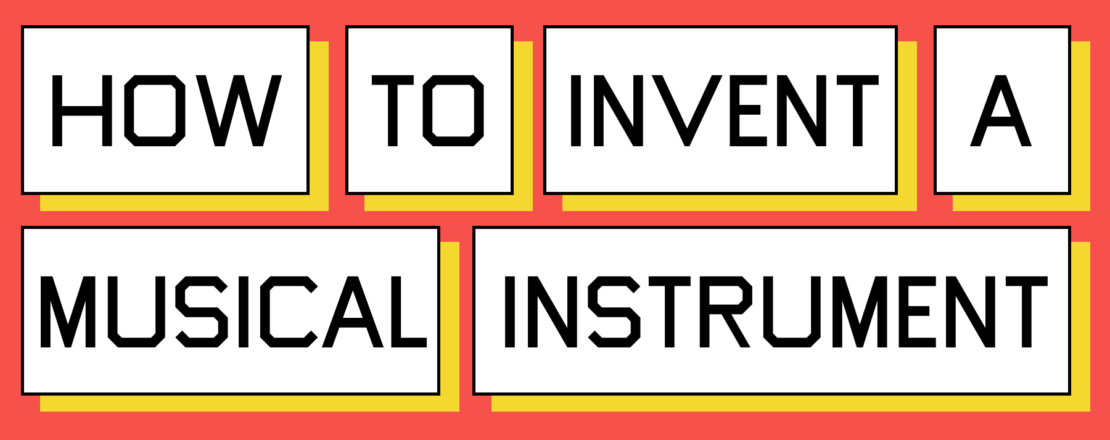
How to invent a musical instrument
Technology has always shaped music. When Steinway added a middle pedal to its grand piano in 1902, it presented possibilities in composition that were only imaginable before. Yet, despite leaps in technology over the past hundred years, the instruments we play have barely changed, and the new ones look a lot like the old ones. So where are all the new musical instruments?
The fate of new instruments is fickle, and for their inventors, success looks precarious. The saxophone – the last newcomer to make it big – was patented by Adolphe Sax, a Belgian flute and clarinet player, in 1846. While its inventor was still alive, the reed-brass hybrid had music written for it by Bizet; but only after Sax died in penury 25 years later was it deified among the new sounds of jazz.
The first electronic instruments, meanwhile, are now pushing a century old. The ethereal theremin (composed for by Shostakovich) and its organ-like cousin the Oondes Martenot (Edgard Varèse, Messiaen and Radiohead) date back to the 1920s. Although both are still played, neither really took off. Electrification made the biggest mainstream waves, producing visceral new versions of the piano in electric keyboards like the Fender Rhodes, Wurlitzer and Clavinet. The electric guitar, which bewildered parents in the 1950s, has since been canonised.
Synthesisers, the newest family of instruments, are also the most ubiquitous, having evolved with new technology and interfaces from the 1960s onwards. At their most basic they share the common trait of converting electric signals into sound; but their sprawling genealogy includes modular and integrated, monophonic, polyphonic, analogue and digital lines. Models fell out of fashion as quickly as the genres they defined crystallised in the popular consciousness; while inventors competed to produce improved iterations and uncover new sounds. But for all their ingenuity and expansion of musical possibility, almost every commercial synth is stuck in the keyboard mould. Other more novel interfaces like the guitar synth and Stylophone had their moments and passed on.
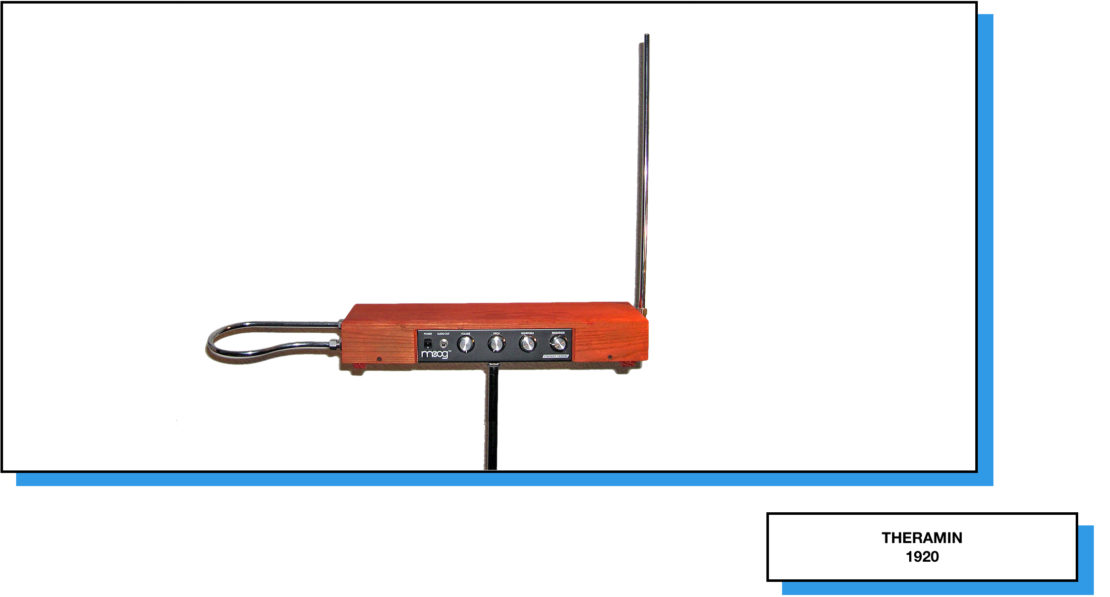
That's not to say thousands of inventive instrument forms aren't created every year. At the annual Guthman Musical Instrument Competition at the Georgia Institute of Technology in Atlanta – billed as a sort of TED Conference for new musical instrument designers – a panel of judges decides which entry best redefines what constitutes a musical instrument and how music is made and experienced. Recent winners include the acoustic Turkish stringed yaybahar and Swedish company Teenage Engineering's portable synth, the OP-1. Yet despite the attention the competition receives, most of its winners remain one-offs. Few make it to market, few see the limits of their potential explored and fewer still have new music composed for them.
One problem, thinks Adam Harper, author of Infinite Music and the go-to musicologist for non-classical at Oxford University, is that musicians become locked in by professionalisation after dedicating years to mastering an instrument. "The instrument you play defines you. You're a saxophonist or a pianist, you play one or maybe one and a half instruments – a slightly larger sax or flute – and you alternate between the two."
For instrument makers, this presents two problems: how to tempt musicians to take up your new instrument; and how to induce composers to write new music for it, especially if the survival of their scores is tied up with the instrument's longevity. Investment goes instead into paraphernalia – microphones, multitracking and delays. Only percussionists in the orchestra are expected to play a range of instruments; and it's this section's inbuilt adaptability that has seen it grow and change the most, adding elements from non-Western traditions like steel drums and Brazilian ganzá, and new kit like the vibraphone.
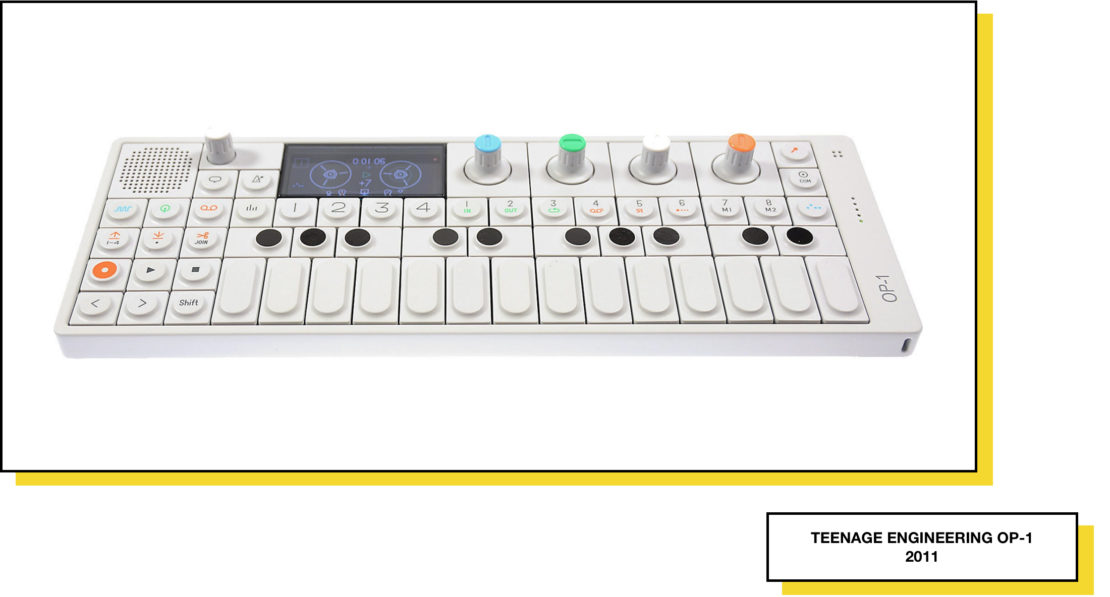
The advent of recording and the studio also arrested development. The ability to record and re-listen to performances dramatically accelerated the professional obsession with perfectionism, raising standards of play. And from the very beginning the distinction between recording gear, tech and recognised instruments was unclear – even for their inventors.
The first Moog synths in the early 1970s were marketed as "professional audio equipment". Tape recorders were used in the early 1940s by French composer Pierre Schaeffer, co-founder of the musique concrète movement, which laid the groundwork for samplers. Later, in 1979, Brian Eno would lecture on the potential of the recording studio as a compositional tool. Today's understanding of instruments is made far more diverse by what people have chosen to repurpose, like turntables. Almost anything, from software to an Arduino circuit, could be classified as an instrument.
Often inventors' intentions were just off the mark. The legendary TR-808 programmable drum machine, made by Japanese company Roland in 1981 and discontinued in 1984, was made for band demos. Its price tag was high and it was expected to sound realistic but the noise it made was very little like that of any known drum kit.
Sign up to our newsletter
"They did the best they could with the analogue technology and it sounded shit," Sean Montgomery, a product manager at Roland, would say later. Instead, its weird computer sounds were embraced by musicians like Ryuichi Sakamoto of Yellow Magic Orchestra. And like many synths before it, commercial failure was the cause of its later success, as it fell out of production and was picked up on the resale market and on the cheap by younger musicians.
In the US, in Afrika Bambaataa and Egyptian Lover's hands, the TR-808's beats laid the foundations of hip-hop. At the same time, Kraftwerk-influenced Juan Atkins founded Detroit techno. So influential is the 808 that a documentary chronicling its history premiered at the 2016 SxSW film festival.
"People will use the instruments as they do," says Roger Linn, the man behind the LM-1 Drum Computer, a more realistic model that came out shortly after the 808, hastening its demise. "And I'm surprised, sometimes pleasantly and sometimes unpleasantly." Linn should know, because in 1988 he helped Akai produce the MPC60 (MIDI Production Centre 60), a small drum machine with 16 punchable pads that could sample 26 seconds of audio. This serendipitously introduced sampling to modern music. "Musicians would ask me, 'Can I have 200 to 300 seconds' more memory?' And when I asked, 'Why would you need that?' they said, 'I would like to use that as the basis for my song.' And I thought, that's a crazy idea, but of course creation from pre-existing loops has become a basis for contemporary composition."
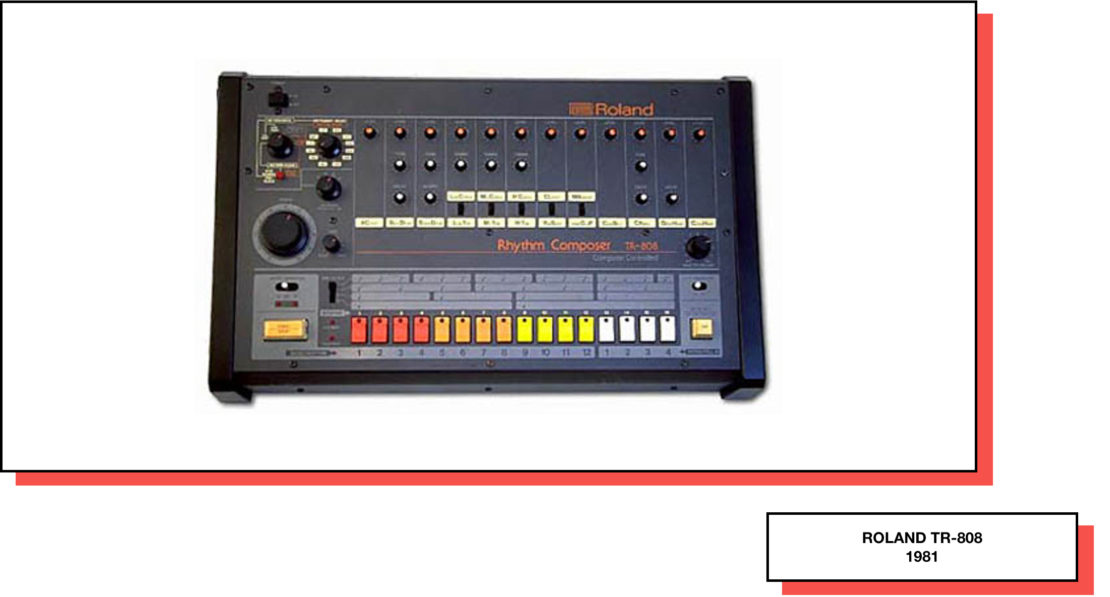
Used by early hip-hop groups A Tribe Called Quest, De La Soul and The Pharcyde, the MP60 gave the producer the means to make beats, sequence instruments and sample sounds all in the one machine, merging real-time composition with recording. By the end of the 1990s, MPCs and samplers were replaced by digital audio workstations (DAWs) – software like Ableton Live, Cubase and Logic – to arrange tracks. While expensive synthesisers and drum machines that had been created originally to replace acoustic instruments and live performers were replaced by software versions using MIDI controllers to control digitally produced sounds. The computers had won, and musical virtuosity began to take more cerebral forms.
"The great benefit of computer sequencers," according to Brian Eno, "is that they remove the issue of skill, and replace it with the issue of judgement."
MIDI is most young people's first taste of music-making today. Dreamed up in the mid-1980s by synthesiser designer Dave Smith and Ikutaro Kakehashi (of Sequential Circuits and Roland), MIDI (Musical Instrument Digital Interface) is a protocol for syncing synths and digital drum machines and sequencers together that changes the parameters of music-creating data.
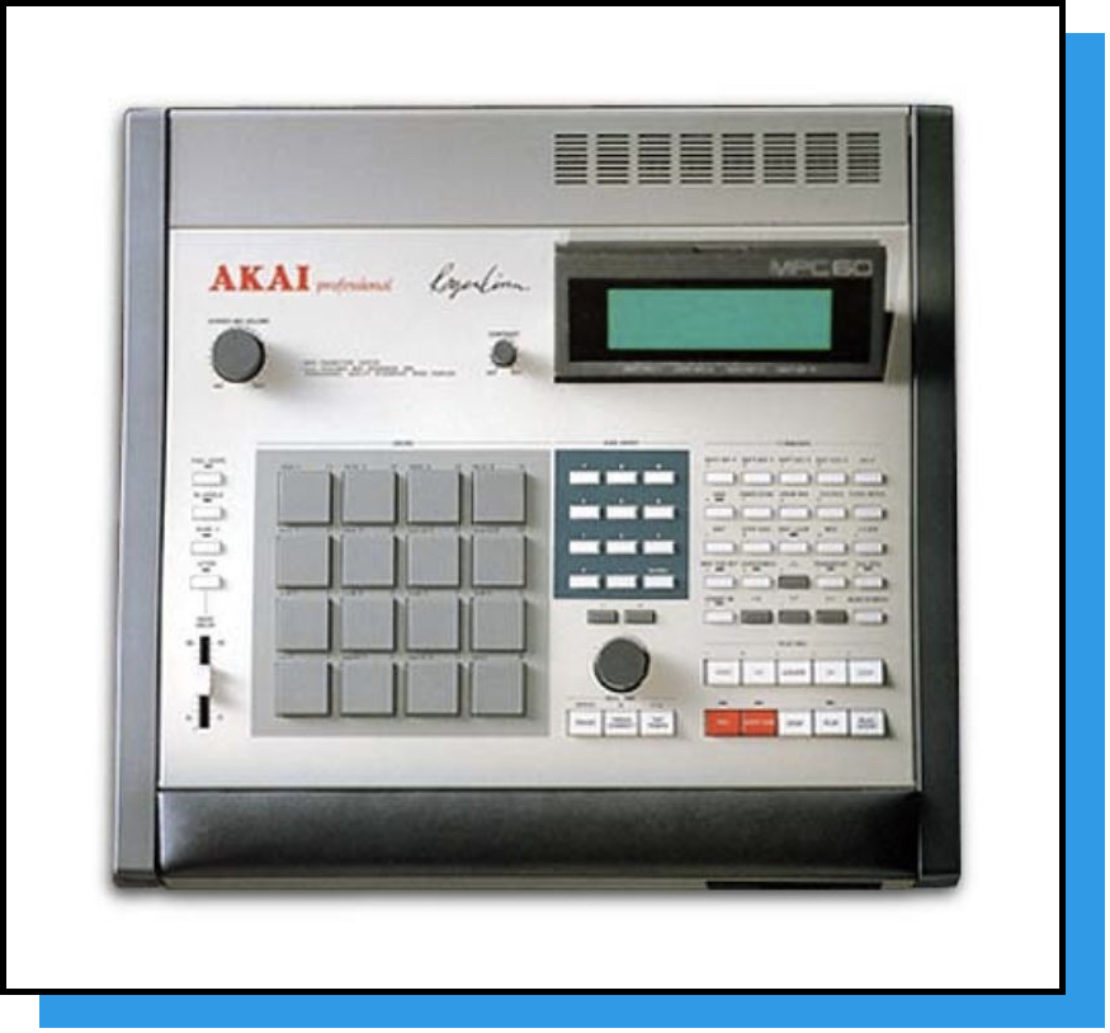
As with so much tech today, its controllers are confined to buttons, dials and faders which lose the sense of real-time physical interaction that acoustic or analogue instruments once had. In the past you might use the pressure of your breath or the strike of fingers to to vary a note and its volume, timbre or tonal character, but in most electronically generated music there's no change in the sound between when a note starts and ends. Limited by their interface, synthesised or electronically generated sounds have lost some aspects of expression. MIDI piano keyboards are "essentially a bunch of on-off switches, and little more than that," says Linn.
But Linn believes we are on the verge of a revolution. "You can look at the period between 1970 and 2020 as [one] of transition for musical instruments, when people played music with switches created for data entry, not for creating music." Linn hopes to return a visceral quality to music-making and physical expression. As if reversing the course set by sampling, he is one of five instrument inventors currently redesigning music technology around the human senses; and making instruments that respond to subtle gestures and movements to palpably shape sound. New controllers like the LinnStrument and Seaboard are MIDI controllers that focus on physical expression; and as such they may force a new paradigm of instrument making.
"After 2020, we will start to see the return of virtuosity and performance skill," says Linn, confidently. Having been in the game this long, he has serious credibility; and his musical background may differ from that of your average technical mind in music technology; his father was a music professor and his mother sang opera.

The LinnStrument has three forerunners: the Eigenharp, Continuum and Soundplane, all of which enable the physical modulation of pitch, volume and timbre. Linn's creation is a flat, pressure-sensitive board with eight grid-like, translucent rows that combine the note schemas of a violin and guitar. Each row has consecutive semitones, as found on stringed instruments, which you can slide between and which are tuned in musical fours as on a bass guitar. Ease of play is essential for Linn, who says, "My goal is to recognise the things that need to be difficult in performance, for example performing a beautiful vibrato. Sliding into a note will change the timbre of the form of playing softly and gradually moving up in volume." He puts ease of play over producing the right pitch, which has hampered more archaic acoustic instruments.
The Seaboard Rise, which came out late last year, combines product design with musical innovation. The Seaboard was invented by Roland Lamb, whose Shoreditch-based startup, Roli, wouldn't feel out of place alongside music companies like Sonos and Ableton. It is used by the likes of composer Hans Zimmer, organist Cory Henry and musicians Dam Funk and London O'Connor. But Lamb aims to embed the instrument in music schools and entrench appeal with musicians across genres as broad as hip-hop, electronica, jazz and classical.
The Seaboard evolved from the piano keyboard but its keyless, pressure-sensitive board enables players to produce pitches between the standard 12 tones; and to vary volume and timbre through touch. The instrument's soft, silicone-like keys make playing feel more sensory, intuitive and organic. Through touch, players can attempt to replicate the feel of playing an acoustic instrument.
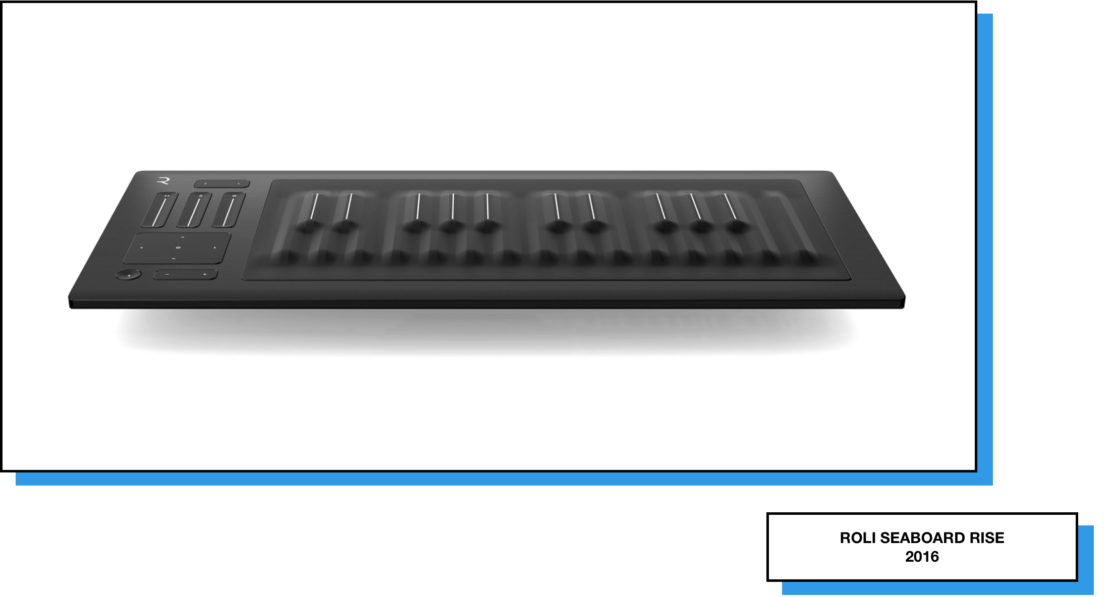
Lamb expresses the same belief as Linn: that digital music is changing. "I think we're now facing a new beginning in music. The worlds of digital and acoustic music are starting to come together," he told Dezeen magazine.
Lamb practised Zen Buddhism in Japan and studied classical Chinese and Sanskrit philosophy at Harvard before taking a master's in design at the Royal College of Art under Ron Arad, where he developed his concept for the Seaboard. There, his chosen external examiner was Roger Linn. Lamb's determination to embed his invention in schools has already come good: playing the instrument is now mandatory for electronic music students at London's Guildhall. It is also starting to be played by students at India's first music conservatory, the KM Institute in Bangalore, which could open up interesting possibilities for Indian shruti music, where tones don't correspond to the western 12-note system.
Roli's staff biographies read like a roll call of young music technology polymaths. The Seaboard Rise is portable and affordable at £600, and the company has recently released a Seaboard app. That the instrument is being used at the Guildhall is promising.
"The institution of classical composition is in a really interesting turmoil," says Adam Harper. "Young people coming in are drawing inspiration from the underground, electronic and popular music, and they're having to find a way to combine those traditions while proving themselves to the professional networks they find themselves in."
Perhaps we're seeing a return to the early days of electronic music when, in the spirit of experiment, composers like Karlheinz Stockhausen and Harrison Birtwistle visited Peter Zinovieff's EMS studio in his shed in Putney. Today, ensembles of young musicians like the London Contemporary Orchestra are collaborating with electronic musicians like Actress, who is not musically trained.
Most read this month
Fiction: Divided we stand, by Tim Maughan How Scotland is tackling the democratic deficit The Long + Short has ceased publishingThis convergence doesn't stop at classical and electronic music. Since free and pirated DAW software has become available, almost anyone with a laptop and internet access can compose and make music by downloading samples and sounds that can replicate any instrument, from a Balinese gamelan to the 808 drum kick. Since streaming and sharing platforms have become widespread, the breadth of music available and people's appetites have expanded massively. "No genre is particularly taboo or hip," says Dick Rijkin, director of STEIM (the Studio for Electro-Instrumental Music). "Within the mainstream, an interesting reflective process is underway where there's almost no sense of linear development in time anymore. People are combining the craziest things."
Through Bandcamp and Soundcloud, Kanye West has plucked producers like Arca – who now works with Björk – and Evian Christ from relative obscurity. Alongside this, a mainstream hip-hop artist like Kanye is also mining the treasures of soul and disco, and sampling niche musicians like the deceased cellist, composer and disco pioneer performer Arthur Russell.
Romance for old sounds and technological obsolescence has driven demand for second-hand Eurorack synths which are now out of production, massively inflating their prices and encouraging the original companies like Yamaha, Korg and Roland to revive their best models. Last year, Roland began selling its first modular synth for 25 years, the System-500. Korg rolled out a remake of the 40-year-old ARP Odyssey. And following its 50th anniversary, Moog is remaking limited numbers of its earliest modular synths. Music magazines like FACT and Resident Advisor devote whole sections to excavating their recent history.
So why are the major companies engaging in this sort of regressive production, rather than exploring new forms of expression? Roger Linn thinks they'll let the pioneers test the market first, although we may see the big companies launching new controllers in time.
The yaybahar, a new acoustic stringed instrument
Even if instruments like the Rise or LinnStrument allow for more physical expression, they are still limited by the format they are expressed in: MIDI. Before the advent of MIDI, argues computer philosopher and composer Jaron Lanier in his polemic You Are Not a Gadget, "a musical note was a limitless field of possibility: when a musician sings or plays an instrument, no two notes are ever the same." But music isn't data and MIDI rinses music and we've accepted its diluted version of sound. Producer and musician Aaron David Ross, who is both classically trained and has studied coding, agrees. "There are around 1000 different articulations audibly available to a pianist per note. Standard MIDI compresses this down to 127. This isn't a problem in many musical styles, particularly in dance music, where dynamics are often flat and loud, but for more expressive composed forms like experimental music or film scoring, this extra emotional resolution could be crucial."
Ross also touches on another problem: MIDI is so standardised in the system, it will be difficult to undo its technological lock-in. "So many independent companies are creating software within the same established specifications that new, highly expressive hardware controllers would be unlikely to be incompatible in a straightforward way."
So the tension between the artificial and authentic that has prevailed through the debates about acoustic versus electric, and analogue versus digital, continues. Arguments about tools and technologies, the strange and the familiar, remain relative as technological obsolescence gains romance and the crude sounds soulful with time.
"People are nostalgic for the low bit rates of early grime," says Adam Harper, "as they got it through [obsolete file sharing platforms] Limewire and Fileshare in the early noughties. Nowadays, people say drum machines have soul. Who knows, maybe 50 years from now people will be listening to MP3s and saying those were the good old days of real music."